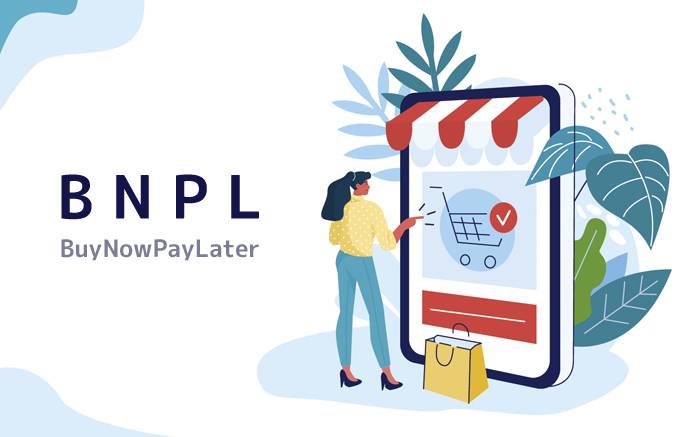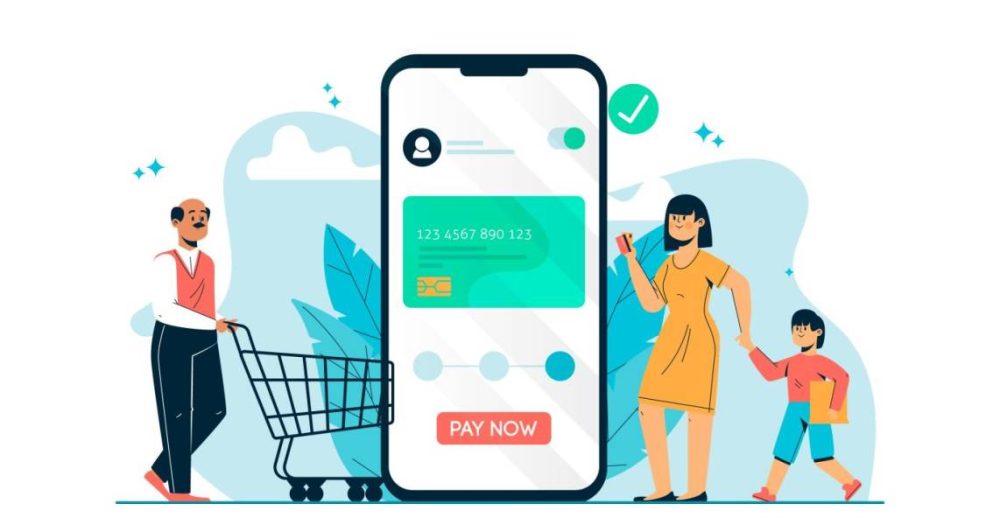The Buy Now, Pay Later (BNPL) model offers instalment-based purchases without high interest rates. As BNPL services expand, companies leverage diverse revenue streams, from merchant fees to interest on extended plans. How might BNPL companies innovate to stay profitable amidst rising scrutiny?
Table of contents:
- Introduction
- Understanding the BNPL Model
- Revenue Streams for BNPL Companies
- The future of the BNPL model
- Final thought
According to Finmasters report, 360 million people used Buy Now Pay Later Services Worldwide in 2022. Particularly appealing to younger, tech-savvy demographics, BNPL offers a simple alternative to traditional credit, allowing shoppers to split their purchases into instalments.
With a growing market and demand for flexible financing options, BNPL companies have created innovative revenue streams to ensure their profitability.
The report shows that:
- In 2021, 31% of Americans used Buy Now, Pay Later (BNPL) services.
- In the UK, more than 17 million people had used BNPL by November 2021, with an average of 3.6 users per month.
- In Australia, 38% of people used BNPL apps, with 5.9 million active customers spending AUD 12 billion during the 2020-2021 financial year.
This article delves into the BNPL business model, exploring how these companies make money, the risks they face, and the future outlook of this rapidly expanding sector.
Understanding the Buy Now Pay Later business model
BNPL enables consumers to make purchases and spread the cost over several interest-free instalments, typically ranging from two to twelve payments. At checkout, shoppers select BNPL as their payment option, and after an initial payment (or sometimes no upfront cost), they agree to repay the balance in subsequent instalments.
This convenience has led to a surge in the adoption of BNPL services, especially among those looking to avoid high-interest credit cards or traditional loans. Major BNPL players include Klarna, Afterpay, and Affirm, which operate in both physical stores and online retail.
For example, Klarna, a popular BNPL app from Sweden, gives users a 10-day grace period if they miss a payment. During this time, it sends reminders to pay. If the payment still isn’t made after these 10 days, a $7 late fee is added to the next payment.
From a business perspective, BNPL offers an attractive value proposition to both merchants and consumers. For merchants, it boosts conversion rates, increases average order values, and appeals to a broader customer base. For consumers, it provides financial flexibility and is typically easier to qualify for than other forms of credit.
This begs the question: How do BNPL companies sustain themselves financially if they offer interest-free instalments?
How do Buy Now Pay Later companies make money?
BNPL companies have developed several revenue streams that collectively ensure profitability and allow them to continue offering their services. The primary sources of income include merchant fees, late fees, interest on longer-term plans, and affiliate marketing. Let’s examine each in detail.
- Merchant Fees
The core revenue driver for BNPL providers is the fee they charge merchants. Typically, these companies charge merchants a percentage of the transaction value, ranging from 2% to 8%, depending on the provider and the arrangement. In many cases, these fees are higher than the average credit card processing fees but are willingly paid by merchants for a few key reasons:
- Increased sales: Merchants experience higher conversion rates as BNPL services reduce barriers to purchase, encouraging customers to buy more.
- Larger basket sizes: BNPL providers encourage higher spending by offering customers the ability to pay over time. Studies show that average order values can increase by 20% to 30% when BNPL options are available.
- Access to younger consumers: BNPL services are particularly popular among Millennials and Generation Z, who often avoid traditional credit cards in favour of alternative financing options.
- Late fees
While the instalments offered by BNPL companies are often interest-free, some BNPL providers charge late fees if customers miss a payment. The structure of these fees varies by provider. For instance, Afterpay charges a flat fee for late payments, while Klarna offers a more flexible fee schedule that depends on the loan amount and delay duration.
Late fees serve as a deterrent for customers, encouraging timely repayments and helping BNPL companies cover potential losses. However, these fees are a controversial revenue source, as some argue that they could contribute to financial strain for consumers who may already be struggling. Regulations are emerging in many regions to ensure fair fee structures, which may impact the profitability of BNPL companies reliant on late fee revenue.
- Interest on extended payment plans
Although most BNPL services are interest-free for short-term instalments, many providers offer extended payment plans (up to several months) that do include interest charges. For example, Affirm allows customers to split payments over a longer period, with interest rates ranging from 10% to 30%, depending on the customer’s creditworthiness and the payment duration.
These interest-based revenue streams can be highly profitable for BNPL companies, particularly when they work with high-value purchases, such as electronics or travel. This approach effectively combines the flexibility of BNPL with a revenue model akin to traditional lending. Companies that offer both short-term, interest-free options and longer-term, interest-bearing plans can cater to a wider range of consumers while diversifying their revenue.
- Affiliate and marketing commissions
BNPL providers often partner with retailers and e-commerce platforms as an affiliate or marketing channel, promoting specific products to their users. By showcasing exclusive deals, discounts, or “recommended” products, BNPL companies can earn a commission from merchants on each referred sale.
This revenue stream also includes partnerships with major online platforms, where BNPL providers gain visibility and share transaction data to help merchants target potential customers more effectively. As a result, BNPL companies not only facilitate transactions but also act as a sales channel, helping brands reach customers who might otherwise be outside their target market. The advertising and affiliate revenue model allows BNPL companies to profit from high user engagement and traffic on their platforms.
How does Afterpay make money?
Afterpay, a leading company in the Buy Now, Pay Later (BNPL) sector, has revolutionised the way consumers approach shopping by allowing them to split the cost of purchases into interest-free instalments. This model has gained popularity due to its simplicity and consumer-friendly terms. At the heart of Afterpay’s business model is the revenue generated from fees charged to merchants.
Afterpay generates revenue through several key channels:
- Merchant Fees
Merchants partnering with Afterpay are charged fees for each transaction processed via the platform. This typically includes a fixed fee of $0.30 per transaction plus a variable fee ranging between 4% and 6% of the transaction value. The exact percentage depends on factors such as the merchant’s sales volume and the nature of their business. These fees constitute the majority of Afterpay’s income.
- Late Payment Fees
While Afterpay offers interest-free instalment plans to consumers, it imposes late fees on customers who fail to make payments on time. For instance, in the United States, a late fee of up to $8 may be applied, not exceeding 25% of the order value. However, Afterpay emphasizes that the majority of its revenue is derived from merchant fees rather than late fees.
- Interchange Fees
In certain markets, Afterpay issues virtual one-time-use cards that customers can use to make purchases. When these cards are used, Afterpay earns interchange fees from the card networks. This revenue stream is particularly relevant in regions where Afterpay’s services are integrated with existing payment systems.
- Advertising and Affiliate Commissions
Afterpay also generates income through advertising and affiliate partnerships. By promoting specific merchants or products within its app or website, Afterpay earns commissions based on customer engagement and sales driven through these promotions. This strategy not only provides an additional revenue stream but also enhances merchant visibility and sales.
The future of the BNPL model
The BNPL market is projected to grow substantially over the next decade, with more consumers opting for flexible financing options. However, for BNPL companies to sustain profitability in the face of regulatory, competitive, and default-related challenges, they may need to evolve and innovate their revenue models. Future strategies could include:
- Enhanced personalisation: By leveraging AI and data analytics, BNPL providers can offer personalised payment options and promotions, potentially increasing engagement and reducing default risks.
- Integration with digital wallets and super apps: BNPL companies may look to integrate their services with digital wallets, super apps, and loyalty programmes to increase transaction volumes and customer retention.
- New partnerships and revenue streams: BNPL companies may form partnerships with travel, healthcare, or education sectors to expand their reach and offer targeted financing for specific needs.
Final thoughts
The Buy Now, Pay Later model has redefined consumer financing by providing a flexible, low-cost alternative to traditional credit. BNPL companies primarily generate revenue from merchant fees, late fees, interest on extended payment plans, and affiliate commissions. While the industry faces challenges from regulatory scrutiny, high default risks, and increasing competition, BNPL providers have shown adaptability in exploring new markets and revenue streams.
As consumers continue to seek out convenient financing solutions, BNPL companies that successfully navigate these challenges and adapt their revenue strategies will likely thrive. By striking a balance between accessibility and responsible lending practices, BNPL providers can remain profitable while offering valuable services to both consumers and merchants in an evolving digital economy.
FAQs
Q.1. What is the Buy Now, Pay Later (BNPL) business model?
Ans. BNPL allows consumers to split their purchase payments into instalments, often interest-free for short terms. It provides an alternative to traditional credit by enabling payments over time.
Q.2. How do BNPL companies make money if they offer interest-free payments?
Ans. BNPL companies earn revenue from merchant fees, late fees for missed payments, interest on longer-term payment plans, and affiliate marketing commissions.
Q.3. Why do merchants pay fees to BNPL companies?
Ans. Merchants benefit from BNPL as it increases sales, and average order sizes, and attracts younger customers who prefer alternative financing.
Q.4. Are there any risks associated with using BNPL services?
Ans. Risks include late fees if payments are missed, and interest charges on extended plans. Regulatory changes may also impact the fees BNPL companies can charge.
Q.5. What is the future outlook for BNPL services?
Ans. BNPL is expected to grow, with companies likely exploring more personalised payment options, integrating with digital wallets, and forming partnerships with other industries like healthcare and education.
Himani Verma is a seasoned content writer and SEO expert, with experience in digital media. She has held various senior writing positions at enterprises like CloudTDMS (Synthetic Data Factory), Barrownz Group, and ATZA. Himani has also been Editorial Writer at Hindustan Time, a leading Indian English language news platform. She excels in content creation, proofreading, and editing, ensuring that every piece is polished and impactful. Her expertise in crafting SEO-friendly content for multiple verticals of businesses, including technology, healthcare, finance, sports, innovation, and more.











